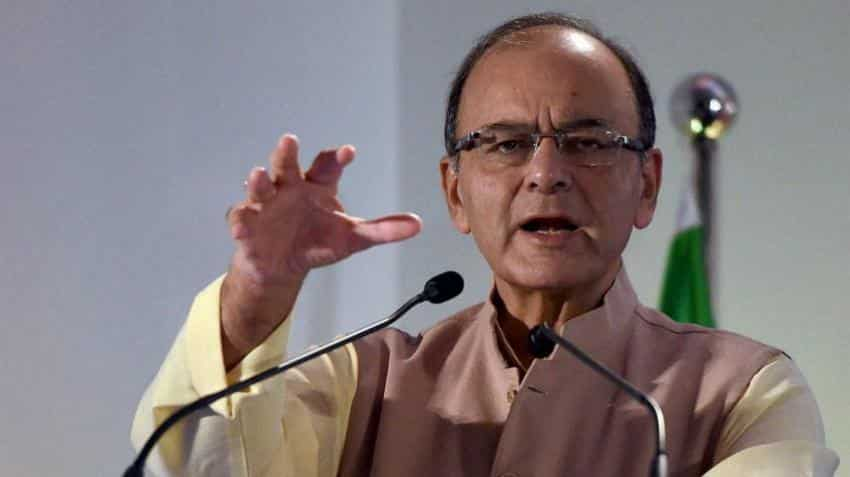Model GST Bill to go for 20% peak tax, slabs intact for now

The GST Council has proposed to raise the peak tax rate to 20%, from the current 14%, in the model goods and services tax Bill to preclude the requirement of approaching Parliament for any change in rates in future.
The change in the peak rate will not alter the 4-slab rate structure of 5, 12, 18 and 28% agreed upon last year, but is only a provision being built into the model law to take care of contingencies in future, two officials in the know told PTI.
The revised draft of model GST law, which was made public in November 2016, provides for a maximum rate of tax under the new regime at 14% (14 % central GST and an equal state GST, taking the total to 28%).
"There shall be levied a tax called the central/state goods and services tax (CGST/SGST) on all intra-state supplies of goods and/or services... At such rates as may be notified by the central/state government... But not exceeding 14 % on the recommendation of the Council and collected in such manner as may be prescribed," the draft law states.
Officials said this "14 %" will now be changed to say the rate will not exceed "20%".
The GST Council, headed by Finance Minister Arun Jaitley and comprising representatives of all states, has agreed to keep the upper band of the rate in the law at 20 %.
"For the moment, we will not tinker with the rate structure of 5, 12, 18 and 28%. The GST Council has decided to keep the upper cap higher at 20% so that in future in case of need to hike tax rate, there is no need to approach Parliament for a nod and the GST Council can raise it," the officials said.
This means the central GST and state GST can be up to 20 % each, leaving the scope for a maximum levy at 40%.
"The 4-tier rate structure that has been decided will hold for now. By keeping the upper cap at 20 %, we are just keeping an enabling provision which the Council can exercise at a later date after deliberation," the official added.
Mirroring the model GST law, the CGST, SGST and UTGST law will be firmed up by the Centre, states and Union Territories, respectively.
The Centre plans to introduce in Parliament the Central GST (CGST) Bill in the forthcoming session beginning March 9.
After it is ratified, the states will introduce the State GST (SGST) Bill in their respective legislative Assemblies.
The central and state officials will soon start the exercise to determine which goods and services should fall in which tax bracket and the same will be taken to the Council for approval soon.
Together with this, they will also decide the goods and services that would attract a cess on top of the peak rate to create a corpus that can be used for compensating states for any loss of revenue from implementation of GST in the first five years.
The government is looking at GST rollout from July 1.
Get Latest Business News, Stock Market Updates and Videos; Check your tax outgo through Income Tax Calculator and save money through our Personal Finance coverage. Check Business Breaking News Live on Zee Business Twitter and Facebook. Subscribe on YouTube.
RECOMMENDED STORIES

Power of Compounding: How long it will take to build Rs 5 crore corpus with Rs 5,000, Rs 10,000 and Rs 15,000 monthly investments?

Looking for short term investment ideas? Analysts suggest buying these 2 stocks for potential gain; check targets

Small SIP, Big Impact: Rs 1,111 monthly SIP for 40 years, Rs 11,111 for 20 years or Rs 22,222 for 10 years, which do you think works best?

Rs 3,500 Monthly SIP for 35 years vs Rs 35,000 Monthly SIP for 16 Years: Which can give you higher corpus in long term? See calculations
03:08 PM IST










 States not in favour of bringing ATF under GST, says finance minister
States not in favour of bringing ATF under GST, says finance minister 55th GST Council Meeting: No GST payable on penal charges levied & collected by banks & NBFCs from borrowers for non-compliance, says Nirmala Sitharaman
55th GST Council Meeting: No GST payable on penal charges levied & collected by banks & NBFCs from borrowers for non-compliance, says Nirmala Sitharaman  GST Council Meeting: Packaged & labelled popcorn with added sugar to attract 18% rate, decision on insurance products deferred
GST Council Meeting: Packaged & labelled popcorn with added sugar to attract 18% rate, decision on insurance products deferred  55th GST Council Meeting: Jet fuel inclusion, lower taxes on insurance policies to be considered
55th GST Council Meeting: Jet fuel inclusion, lower taxes on insurance policies to be considered GoM on GST rate rationalisation yet to submit report, GST Council to take final decision: CBIC
GoM on GST rate rationalisation yet to submit report, GST Council to take final decision: CBIC